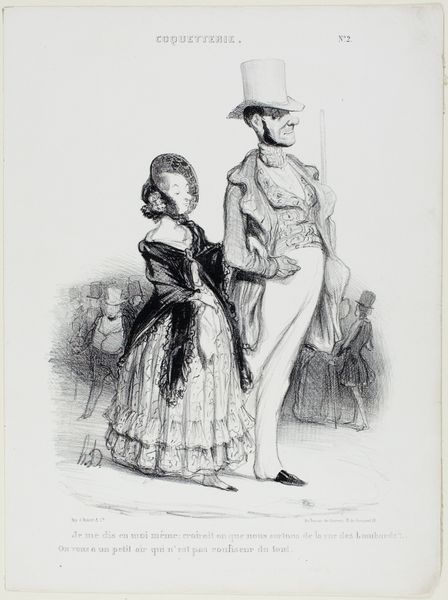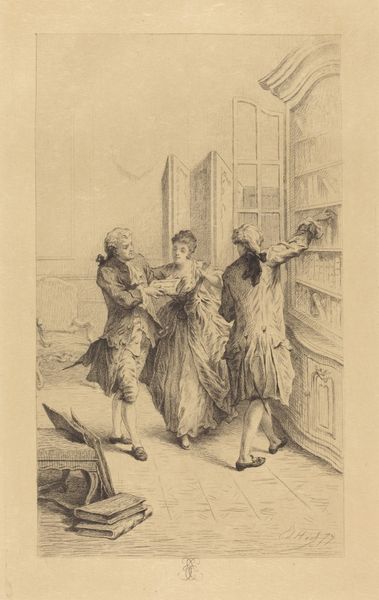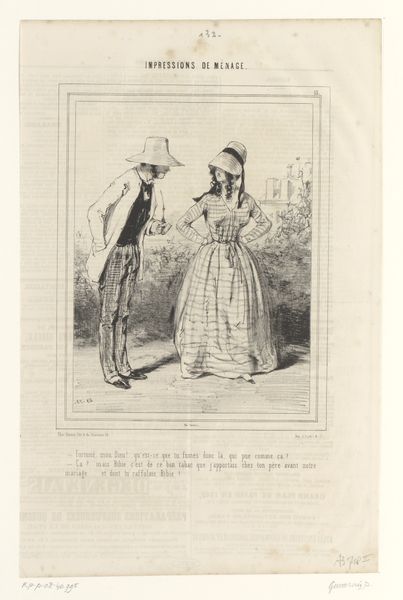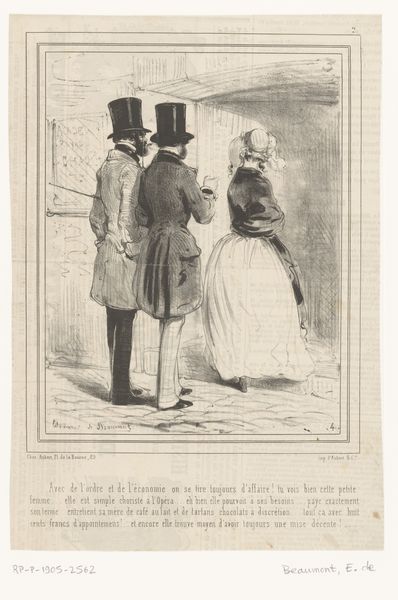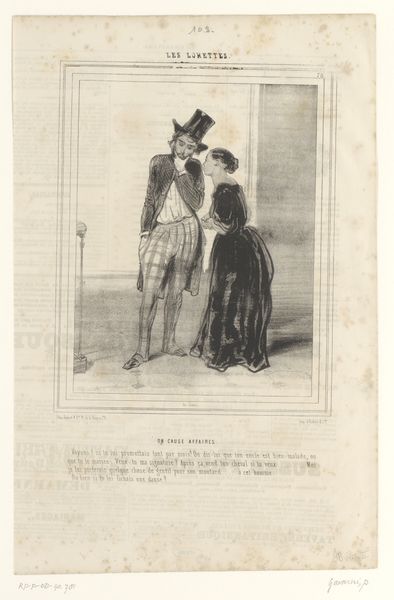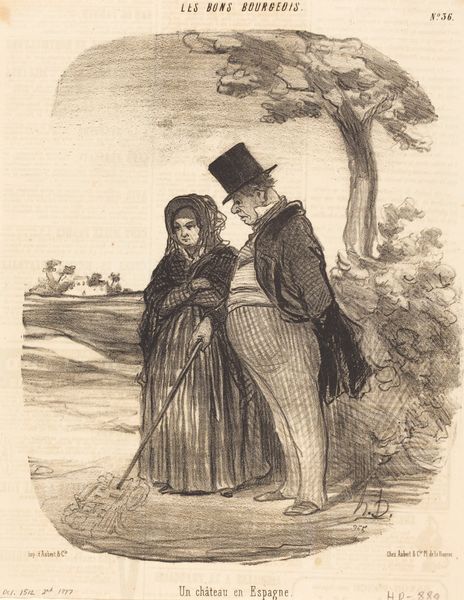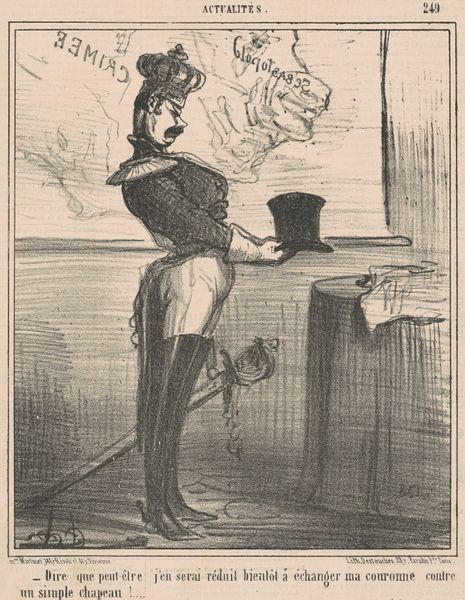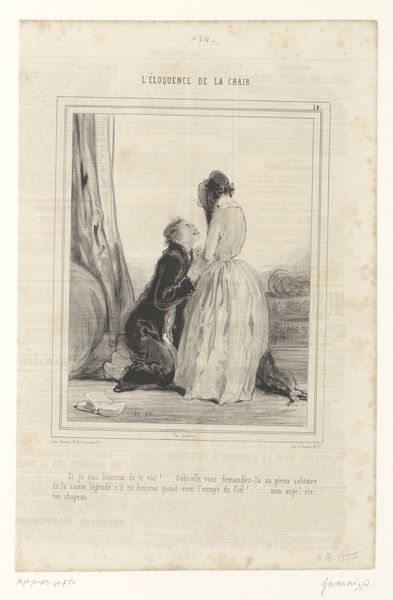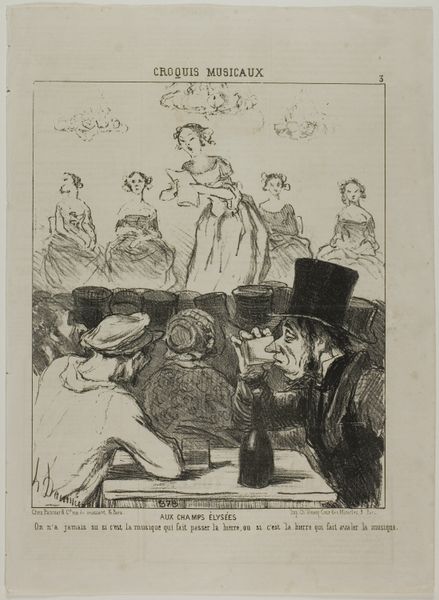
drawing, lithograph, print, pencil
#
drawing
#
lithograph
# print
#
pencil sketch
#
figuration
#
romanticism
#
pencil
#
cityscape
#
genre-painting
Dimensions: image: 22.2 x 15 cm (8 3/4 x 5 7/8 in.) sheet: 33.7 x 25.3 cm (13 1/4 x 9 15/16 in.)
Copyright: National Gallery of Art: CC0 1.0
Editor: We're looking at "Une de ces mines pudibones," a lithograph and pencil drawing by Paul Gavarni, created around 1843. It has such a fleeting quality, like a quickly captured street scene. I’m drawn to the contrast between the detailed figures and the more loosely rendered background. What stands out to you? Curator: Indeed, the rapid execution and deliberate compositional choices are striking. Note how Gavarni employs hatching and cross-hatching to build up tonal depth, particularly in the figures’ attire. Consider, also, how the artist uses the linear quality of lithography to emphasize form. What effect do you think this focused detailing has? Editor: I guess it emphasizes certain areas over others. Perhaps drawing attention to the different status or activities of each person portrayed. Curator: Precisely. The texture becomes a carrier of value, delineating space, clothing, and posture. This calculated play with line and tone emphasizes certain elements within the depicted social scene, prompting us to examine them in closer detail. Now, if you examine the perspective… Editor: The horizon line is placed quite high. I mean, if you break it down into shapes and lines it does kind of give you a strong impression of spatial depth! Curator: Observe also how this strategic compression heightens the monumentality, of what seemingly depicts an insignificant event. The piece is formally Romantic through its exploration of themes like alienation and modernity, despite what might seem on the surface as a traditional rendering of ordinary subjects. How do we balance Romanticism and figuration? Editor: It’s funny how Gavarni takes these everyday moments and then uses artistic choices like tone, form, and even perspective to draw meaning out of them. He's more than just documenting something, but composing to reflect something larger than itself.
Comments
No comments
Be the first to comment and join the conversation on the ultimate creative platform.


